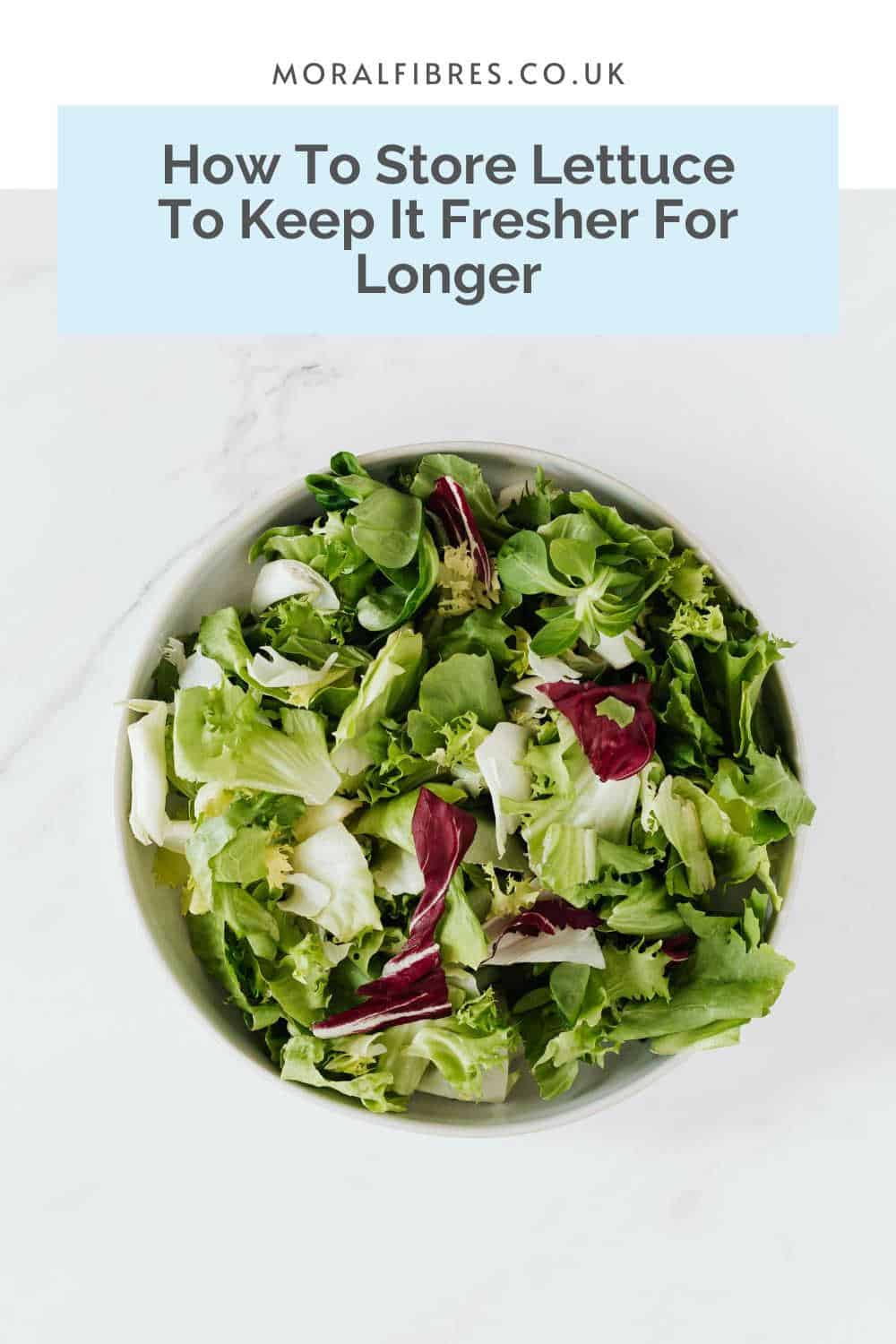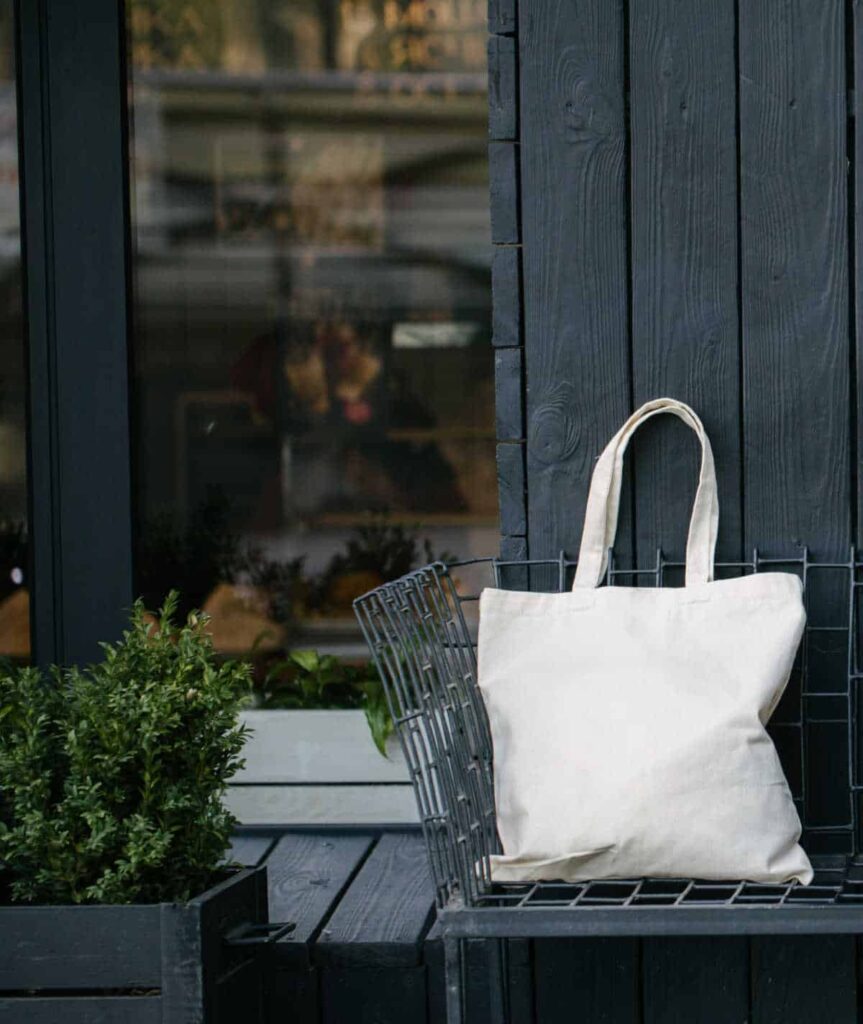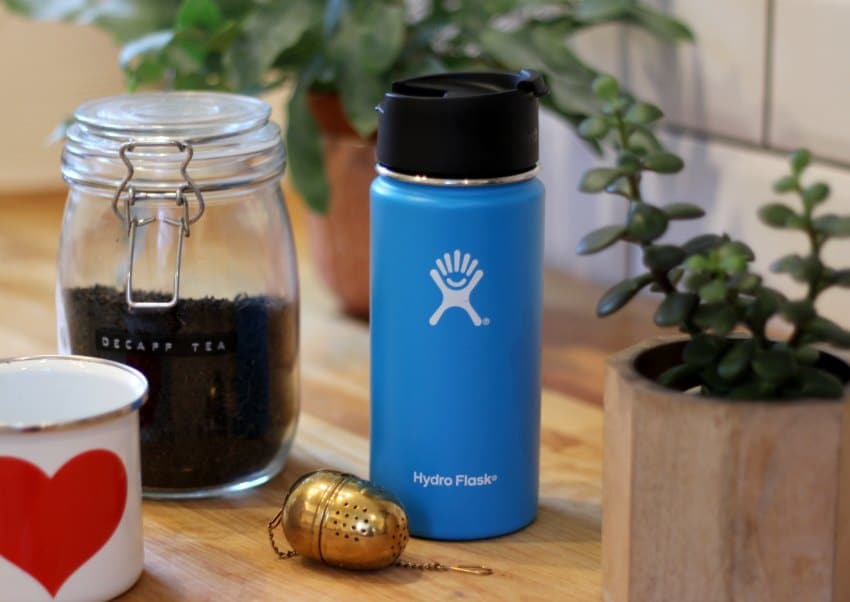How To Store Lettuce To Romaine Fresher for Longer
To support the running costs of Moral Fibres, this post may contain affiliate links. This means Moral Fibres may earn a small commission, at no extra cost to readers, on items purchased through these links.
Are you looking to cut your food waste? Here are my top tried and tested plastic-free tips on how to store lettuce so that it ‘romaines’ fresher for longer. I’ve also got handy tips to help revive limp lettuce, so you can reduce waste even further.
Did you know that here in the UK we throw away 40% of the bagged salad we buy every year? This works out to around 37,000 tonnes of lettuce – the equivalent of 178 million bags of salad – being discarded year on year.
According to research, this waste stems from the fact that shoppers do not always buy bagged salads with a specific meal in mind. This then, in many cases, leads to these bags of lettuce being forgotten about and then binned.
I’ve been blogging for years now about food waste, and for good reason. When food is wasted, the energy and water it takes to grow, harvest, transport, and package that food is wasted too. And if food isn’t composted, it goes to landfill. Here it produces methane – a greenhouse gas with 21 times more warming potential than carbon dioxide.
I think that the Government and supermarkets have the biggest responsibility when it comes to tackling food waste. However, that’s not to say that we as individuals shouldn’t take responsibility for our own food waste. Reducing our food waste saves money too, so it’s very much a win-win.
Luckily, there are lots of tips and techniques on proper food storage that can prolong the life of our food. Like lettuce leaves, for example. Lettuce take a look!
How To Store Lettuce To Keep It Fresher For Longer

Let’s chat through the three main ways to store lettuce, to keep it fresher for longer. For extra eco brownie points, all of these methods are plastic-free.
You can use the following quick links to jump to each method or keep scrolling for the full post:
The Tea Towel Method
One of the first ways to make your lettuce last longer is what I refer to as the tea towel method – you can use this for bagged salad.
First, pick out any slimy leaves and compost them. Then give the remaining leaves a good wash. You don’t have to wash the leaves, but I find it a hundred times more convenient knowing that the lettuce leaves are ready to be used immediately.
Next, dry the leaves off as best as you can, either with a salad spinner or a tea towel. I know some people use kitchen roll for this purpose, but a clean tea towel works really well if you’re looking for a waste-free method.
Now, get another clean dry tea towel and spread your lettuce greens out on it. Then gently roll up the towel, like you would roll a Swiss Roll, and store the lettuce (towel and all) in the bottom drawer of your fridge. This method works because the towel absorbs any excess moisture, keeping the lettuce fresher for longer. I found lettuce stays fresh for around a week using this method.
The Jar Method
Another great way that I’ve found to store lettuce is to store it in a jar in your fridge. Bagged salad can also be stored using this method – it lasts way longer in a jar than in the bag.
To use the jar method, simply take a large clean and dry lidded jar.
Pick out and compost any slimy leaves from your lettuce. Next, wash the remaining lettuce, and dry it using a salad spinner or tea towel to remove as much water as possible. Then chop or tear the lettuce leaves up into whatever size you prefer. Finally, pop the dry leaves in the jar. Pop the lid on, and place it in your fridge.
Your lettuce should stay fresh for about a week in the jar.
There is a bit of a lettuce myth going around. Some people say a torn lettuce leaf lasts longer in the fridge, compared to a cut lettuce leaf. The rationale behind this is that, when you tear a lettuce, it tears along the natural seams of the lettuce. This damages fewer cells, limiting their exposure to oxygen.
In theory, cutting the leaves damages more cells, increases their oxygen exposure, and makes the leaves brown more quickly. I personally don’t find tearing or chopping makes a difference – but proper storage definitely does.
The Cup Of Water Method
My final technique is the cup of water method. This is best suited for storing a whole head of lettuce – much like you would store spring onions correctly. Essentially, you store a whole head of lettuce in a cup or bowl of water to keep your lettuce fresher for longer.
Simply slice a tiny amount off the end of the lettuce, and then pop the lettuce into a cup of water (end side down) until you are ready to use the lettuce.
Not only will your lettuce stay fresh, but it may also continue to grow. Store it in the fridge or on your countertop – wherever you have the most space. Don’t forget to change the water when it goes cloudy, or top up the water when needed.
How To Revive Limp Lettuce
You’ve followed all the tips on storing lettuce, but you accidentally forgot about your lettuce, and now the leaves have gone limp? It’s ok, it happens! If the leaves haven’t gone slimy, and are just a little wilted, then it’s really easy to revive limp lettuce.
Simply get a bowl of icy cold water, and submerge your lettuce leaves. Leave them in there for up to around 20 minutes to rehydrate. Next, remove the leaves from the water and allow them to drain. Alternatively, spin the leaves in a salad spinner to remove excess water. Then serve or store as above.
PS: As an extra tidbit, did you know that you can regrow lettuce? Kitchen wizardry at its finest!
Found this post useful? Please consider buying me a virtual coffee to help support the site’s running costs.




